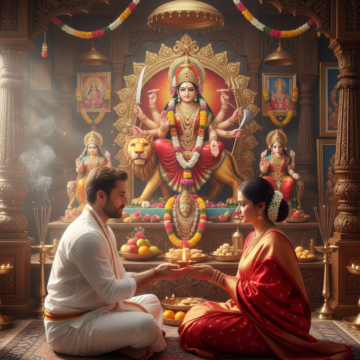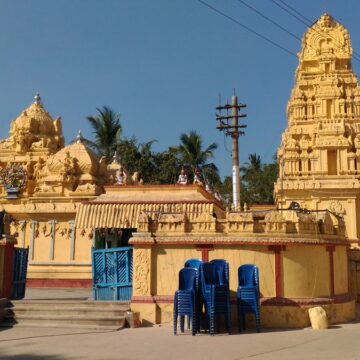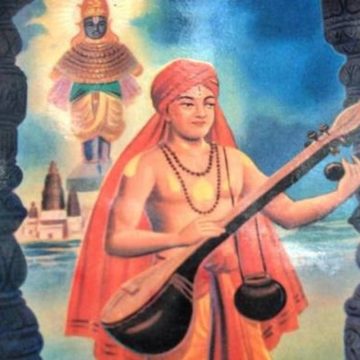Hindu Dharma envisions men and women as two halves of a whole, each essential in fulfilling the four Purusharthas, Dharma, Artha, Kama, Moksha. A wife is not a bystander but a Sahayogi, without whom even Yajnas lose their merit. While our Shastras elevate a virtuous Bharatiya Naari to the same position of reverence as a Teertha, they also bind men with strict codes of Dharma. Together, such men and women uphold a society rooted in balance, respect, and true Shakti that arises out of virtuous living.
Author: Rati Hegde (Rati Hegde)
Mahadev Shambhu – The Story of a Gram-Devata
This story by Rati Hegde, about Mahadev Shambhu, a Gram-Devata, captures the the reality of many such deities and their temples in India. It traces the socio-economic and cultural shifts that have shaped the ecosystem of these temples through the decades. The author paints a poignant picture of how duty and devotion have given way to reluctant obligation even as these deities continue to remain central to the Hindu faith.
Gyaana and Adhikara
Should trade secrets be revealed to all and sundry? Do the custodians of groundbreaking technology and classified information have the right to shield their secrets from prying eyes? If yes, then the courtesy should be extended to ancient dharmik knowledge systems as well - the concept of Adhikara of access to exclusive information and knowledge; and access should only be granted to those with Adhikara as allowed by Dharma Shastras.
Purandara Dasa’s Wife: Ushering A Miserly Rich Trader Into A Tamboori-Wielding Mendicant Saint-Poet
This the story of Purandara Dasa's wife Saraswati Bai, the woman who transformed a rich miser who sat on wealth for his entire life into a barefoot mendicant Dasa of Sri Hari. Purandasa Dasa, also known as the 'pitamah of Carnatic music', is known to have composed 4,75,000 devotional songs, all attributed to Purandara Vitthala, of which at least 1,000 songs still survive.
Kashi Corridor – From Spirituality to Materialism
Treating temples as just another structure that can be replaced is to give in to the adharma of disregarding and offending the divinity that resides within them.





